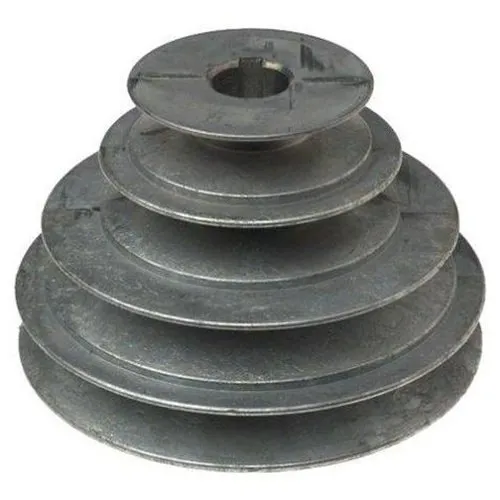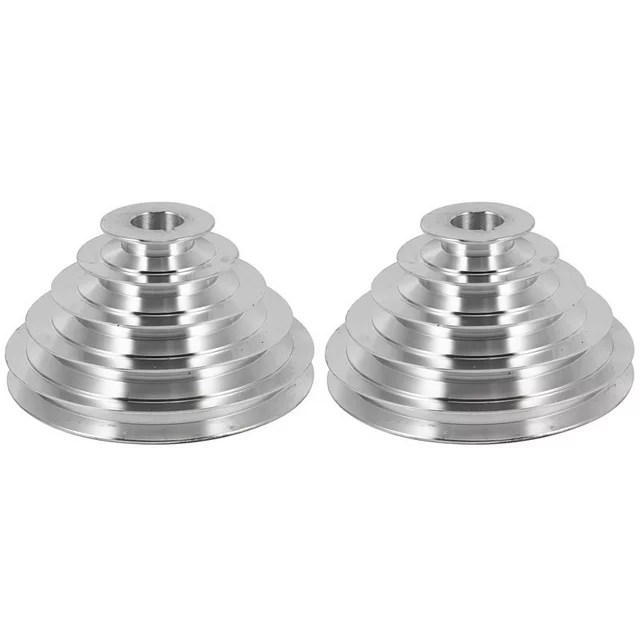Product Description
Description
- OEM size suit for customers’ requirment
- Multiple color can be choosed
- Engraved or embossed logo accepted
- Large order quantity are able to be fulfilled
- Strict quality control system
- In time delivery and thoughtful custom-service
- Certification: SGS, GB/T 19001-2016, ISO9001:2005
| material | Nylon ,mcnylon,POM,ABS,PU,PP,PE,PTFE,UHMWPE,HDPE,LDPE, PVC,etc. |
| color | Black, white, red, green, transparent or any color according to Pantone code |
| size | As per customer’s requirements |
| Technology | Injection molding, CNC machining, Extrusion. |
| Surface Treatment | Powder coating, Zinc coating, Galvanization, Electro-deposition coating, Chrome/zinc/nickel plating, Polishing, Silkscreen, Black oxide |
| Application | Automotive, ATV, Mechanical equipment, Construction, Home appliance, Aviation, Office facilities, Agriculture, etc. |
| Shippment | We have longterm cooperation with internation shipping agent and express company, so that shipping safty and arriving time are secured |
Our Factory
Zhongde is a leading manufacture of OEM parts in rubber & plastic & metal parts. We are always pursuing providing better quality products in shorter period. With a knowledgeable team which has experience in molding and production, we are confident to help you develop and manufacture your product
Our Machine
Our Certification
Zhongde is a SGS verified manufacture. We have passed ISO9001:2005 quality control certifacation as well as environment management certification.
For fast quotation, please inform below detials;
1. Product type
2. Size (provide samples or 2d/3d drawings for reference)
3. Material specification (or let us using environment)
4. Quantity request
5. Prefer color
Contact Us
/* January 22, 2571 19:08:37 */!function(){function s(e,r){var a,o={};try{e&&e.split(“,”).forEach(function(e,t){e&&(a=e.match(/(.*?):(.*)$/))&&1
| Certification: | SGS, GB/T19001-2016, ISO9001:2005, RoHS, etc |
|---|---|
| Pulley Sizes: | Type D |
| Manufacturing Process: | Forging |
| Samples: |
US$ 0.0/Piece
1 Piece(Min.Order) | Order Sample |
|---|
| Customization: |
Available
| Customized Request |
|---|
.shipping-cost-tm .tm-status-off{background: none;padding:0;color: #1470cc}
| Shipping Cost:
Estimated freight per unit. |
about shipping cost and estimated delivery time. |
|---|
| Payment Method: |
|
|---|---|
|
Initial Payment Full Payment |
| Currency: | US$ |
|---|
| Return&refunds: | You can apply for a refund up to 30 days after receipt of the products. |
|---|

What is the significance of proper alignment and tensioning in step pulley systems?
Proper alignment and tensioning are crucial for the optimal performance and longevity of step pulley systems. Here’s why they are significant:
1. Efficient Power Transmission:
Proper alignment ensures that the step pulleys and the belts or cables are correctly positioned relative to each other. This alignment allows for efficient power transmission from the driving pulley to the driven pulley. When the pulleys are aligned, there is minimal slippage or energy loss, resulting in efficient transfer of power and improved overall system performance.
2. Minimized Wear and Damage:
Correct tensioning of the belts or cables is essential to prevent excessive wear and damage. When the tension is too loose, the belts or cables may slip, causing accelerated wear and heat generation. On the other hand, if the tension is too tight, it can lead to increased stress on the pulleys, bearings, and belts or cables, potentially causing premature failure. Proper tensioning helps maintain the optimal balance, reducing wear and extending the service life of the components.
3. Reduced Vibration and Noise:
Misalignment or improper tensioning can result in vibration and noise in the step pulley system. Vibrations can affect the overall stability of the machinery and contribute to increased wear and fatigue on the pulleys and other components. Proper alignment and tensioning help minimize vibrations, resulting in smoother and quieter operation, which is desirable for both operator comfort and the longevity of the system.
4. Prevented Belt or Cable Slippage:
Proper alignment and tensioning significantly reduce the risk of belt or cable slippage. Slippage can occur when the belts or cables lose traction with the pulleys, leading to a loss of power transmission and compromised performance. By ensuring proper alignment and tension, the risk of slippage is minimized, ensuring reliable and consistent power transfer.
5. Extended Component Life:
When step pulleys, belts or cables, and other system components are properly aligned and tensioned, they experience less stress and wear. This contributes to extended component life and reduces the frequency of replacements or repairs. Proper maintenance of alignment and tensioning helps protect the integrity of the system, minimizing the risk of sudden failures and downtime.
6. Improved Efficiency and Productivity:
By maintaining proper alignment and tensioning, step pulley systems operate at their optimum efficiency. The ability to transfer power smoothly and reliably enhances the productivity of the machinery or equipment. It allows for accurate speed control and consistent performance, leading to improved production output and quality.
In summary, proper alignment and tensioning are of utmost importance in step pulley systems. They ensure efficient power transmission, minimize wear and damage, reduce vibration and noise, prevent slippage, extend component life, and improve overall system efficiency and productivity.

How do step pulleys contribute to energy efficiency in industrial processes?
Step pulleys play a significant role in improving energy efficiency in various industrial processes. Here are some ways in which step pulleys contribute to energy efficiency:
1. Speed Control:
Step pulleys allow for precise speed control in machinery and equipment. By adjusting the belt position on different steps of the pulley, operators can optimize the rotational speed of the driven components. This enables matching the speed to the specific requirements of the process, preventing unnecessary energy consumption.
2. Variable Speed Options:
With multiple steps on the pulley, each corresponding to a different speed ratio, step pulleys offer a range of variable speed options. This versatility allows operators to select the most efficient speed for different tasks or materials. By operating at the optimal speed, energy waste is minimized, resulting in improved energy efficiency.
3. Power Transmission Efficiency:
Step pulleys contribute to power transmission efficiency in machinery and equipment. By selecting the appropriate step and corresponding belt position, the pulley ensures that power is transmitted efficiently from the driving source to the driven components. This optimization minimizes energy loss and maximizes the use of available power.
4. Load Matching:
Step pulleys enable load matching, which involves adjusting the speed of the machine to match the load requirements. In industrial processes where the load fluctuates, step pulleys allow operators to optimize the speed to match the changing demands. This prevents overloading the system and reduces energy waste.
5. Reduced Overheating:
Efficient speed control provided by step pulleys helps reduce overheating in machinery. By operating at the appropriate speed, the machine can avoid excessive friction and heat generation. This results in lower energy consumption and extends the lifespan of the equipment.
6. Energy Conservation:
By optimizing the speed and power transmission, step pulleys contribute to overall energy conservation in industrial processes. The ability to adjust the speed according to specific requirements ensures that energy is utilized only when necessary, reducing wastage and lowering energy consumption.
7. Customization for Specific Applications:
Step pulleys allow customization of machinery for specific applications, optimizing energy usage. Different materials or processes may require different operating speeds. Step pulleys enable operators to tailor the machine’s performance to meet the specific energy requirements of each application, resulting in improved efficiency.
8. Potential for Energy Recovery:
In some cases, step pulleys can be integrated into systems that allow for energy recovery. For example, in systems with regenerative braking, step pulleys can assist in capturing and redirecting energy that would otherwise be wasted, further enhancing energy efficiency.
By providing precise speed control, variable speed options, power transmission efficiency, load matching capabilities, reduced overheating, energy conservation, customization for specific applications, and the potential for energy recovery, step pulleys significantly contribute to energy efficiency in industrial processes. Their role in optimizing energy usage and reducing waste makes them valuable components in various industries.

Can you explain the key components and design features of a step pulley?
A step pulley consists of several key components and design features that enable its functionality. Here are the main components and design features:
1. Pulley Wheel:
The pulley wheel is the main component of the step pulley. It is typically a cylindrical or disk-shaped wheel with multiple grooved steps or levels on its circumference. Each step corresponds to a specific diameter.
2. Steps:
The steps on a step pulley are the different levels or grooves machined into the pulley wheel. These steps have varying diameters, which determine the speed ratio when the belt or chain is moved between them. The operator can manually adjust the belt or chain position to different steps to achieve the desired speed.
3. Belt or Chain:
A belt or chain is used to transmit power from the driving pulley to the driven pulley. It wraps around the steps of the pulley and engages with the corresponding grooves. The belt or chain is moved from one step to another to change the effective diameter and adjust the speed ratio.
4. Manual Adjustment Mechanism:
Step pulleys are designed to allow manual adjustment of the belt or chain position. This adjustment is typically achieved by sliding or shifting the belt or chain between steps. The pulley may have a mechanism such as a lever, handle, or knob to facilitate easy adjustment.
5. Support and Mounting:
Step pulleys are mounted on shafts that are supported by bearings or bushings. The pulley shaft is connected to the driving source, such as an electric motor or an engine, and the driven component through a power transmission system.
6. Material and Construction:
Step pulleys are usually made of durable materials such as cast iron, steel, or aluminum. The pulley is precision-machined to ensure accurate step dimensions and smooth operation.
7. Size and Configuration:
The size and configuration of step pulleys can vary depending on the specific application and requirements. They can range from small pulleys used in handheld tools to larger pulleys used in industrial machinery.
8. Safety Features:
Some step pulleys may include safety features such as guards or covers to prevent accidental contact with moving parts and reduce the risk of injury.
These key components and design features work together to enable the step pulley to provide variable speed options and adjustability in mechanical systems.


editor by CX
2024-04-04



